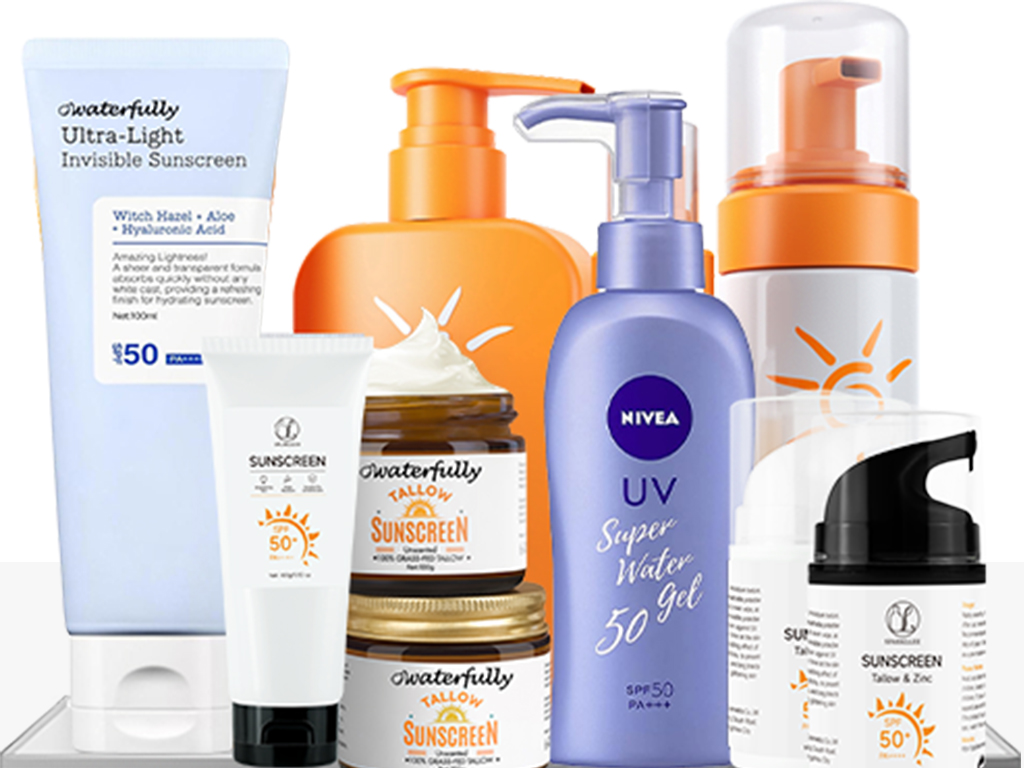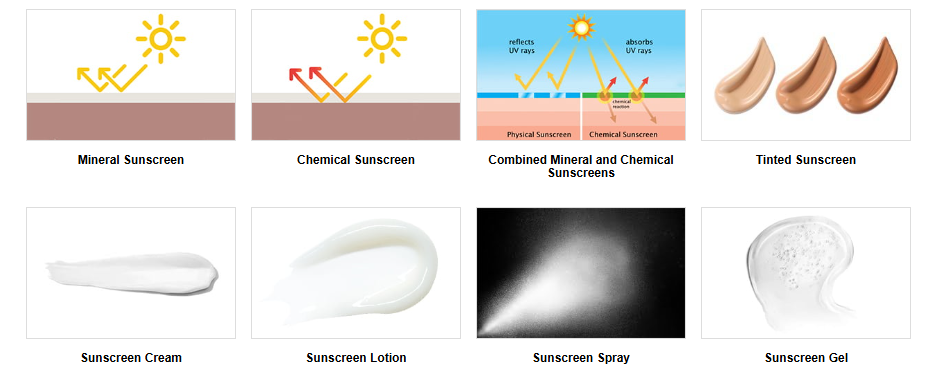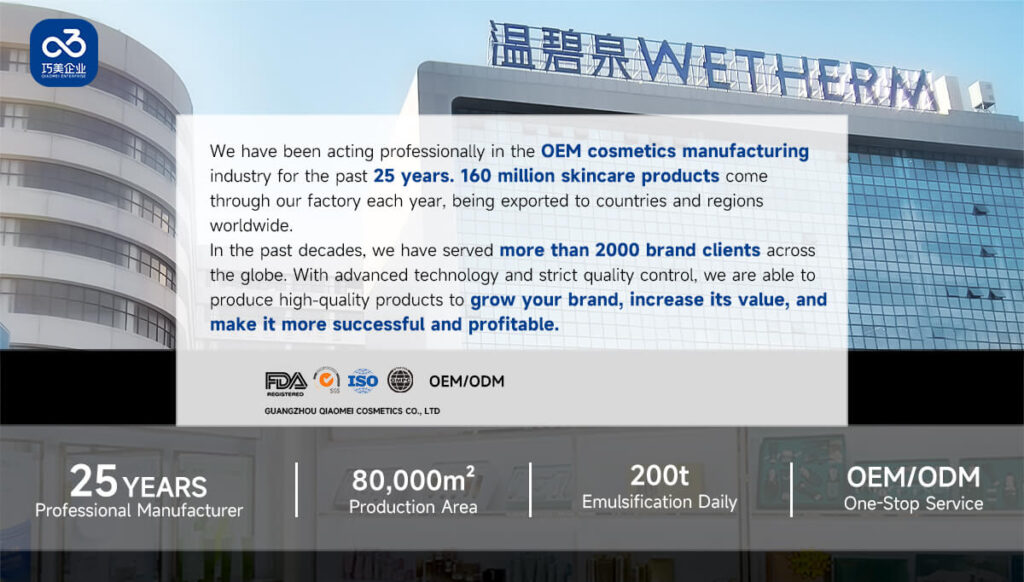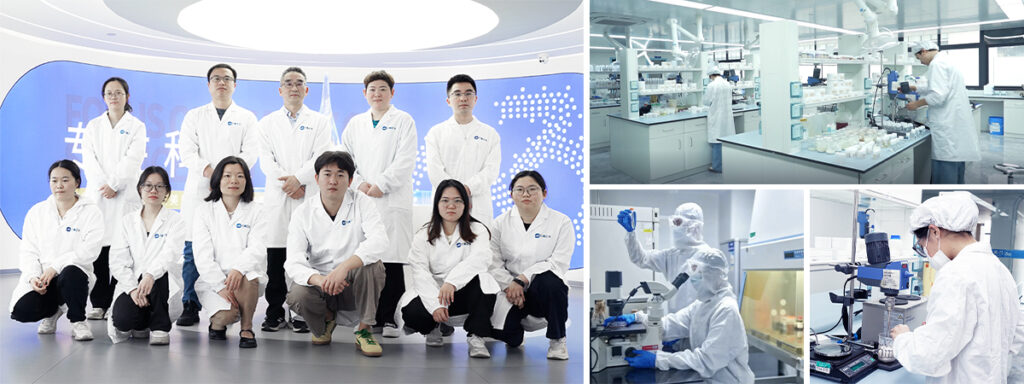
Sunscreen is a year-round essential for everyone, yet many people struggle to identify the key indicators for choosing a product that effectively protects against cancer-causing ultraviolet rays—a truly confusing and complex dilemma.
How much SPF/PA is sufficient? Which is better: mineral or chemical sunscreen? Is it water-resistant?
Here’s a concise guide to help you navigate these questions.
What SPF really means
Each bottle, tube or spray can of sunscreen is required to list its sun protection factor, or SPF number, to show how much it shields the skin against the sun’s ultraviolet B (UVB) rays, which damage the superficial layers of skin. The SPF number can range from 2 to 100.
The SPF number is a measure of how much longer it takes untanned skin to start to redden with the sunscreen applied vs. how long without it.
Contrary to popular belief, an SPF of 30 is not twice as effective as a sunscreen with an SPF of 15,” says Dr. Zhang, Director of R&D at QiaoMei Cosmetics Manufacturing.
To determine a product’s SPF, manufacturers are supposed to use a simple formula:
Divide the number of seconds it takes an untanned patch of skin to slightly redden when covered in sunscreen by the number of seconds it takes unscreened skin to slightly redden.
The formula for calculating SPF (Sun Protection Factor) can be expressed mathematically as:
SPF = T₁ / T₀
Where:
T₁= Time (in seconds) required for protected skin (with sunscreen) to show minimal erythema (slight redness) under UV exposure
T₀= Time (in seconds) required for unprotected skin to show the same degree of erythema under identical UV conditions
Note: This laboratory measurement must be conducted under standardized conditions (ISO 24444 or FDA 2011 testing protocols) using a solar simulator with controlled UV intensity.
For example, if it takes 300 seconds of sun exposure for skin to turn slightly red with a particular sunscreen, and 10 seconds without。
T₁ = 300 seconds(Time to minimal erythema with sunscreen)
T₀ = 10 seconds(Time to minimal erythema without protection)
SPF = T₁ / T₀=300/10=30
In general, a sunscreen is supposed to offer protection at the following SPF levels:
SPF 15 protects against 93% of UVB rays
SPF 30 protects against 97% of UVB rays
SPF 50 protects against 98% of UVB rays
SPF 100 protects against 99% of UVB rays
What PA really means
PA (Protection Grade of UVA) measures defense against UVA (long-wave ultraviolet radiation), which accelerates photoaging, wrinkles, and hyperpigmentation.
PA Rating System (Asia Standard)
The protection level is denoted by “+” symbols:
• PA+ = Moderate protection (PPD 2-4)
• PA++ = Substantial protection (PPD 4-8)
• PA+++ = Superior protection (PPD ≥8)
• PA++++ = Highest grade (PPD ≥16, typical in high-performance products)
Remarks:PPD = Persistent Pigment Darkening

Ebunking the Water-Resistance Myth in Sunscreens
The Most Common PA Measurement: PPD Testing Method – A Complete Walkthrough
PPD (Persistent Pigment Darkening) Test Procedure
1. Subject Selection
Participants: Healthy volunteers (typically Fitzpatrick skin types III-IV, prone to tanning).
Test Area: Back or inner forearm (uniform skin tone, no pigmentation).
2. Baseline UVA Exposure(P1)
Unprotected Test:Expose untreated skin to UVA light (320-400 nm).Record MED-UVA (Minimal Erythema Dose for UVA): the minimum UVA energy (J/cm²) required to induce persistent pigment darkening (PPD).
3. Sunscreen Product Testing(P2)
Application:Apply sunscreen to the same area (2 mg/cm², per SPF testing standards).
Allow 15-30 min for film formation.
UVA Exposure:Re-expose skin to the same UVA source.Gradually increase exposure until visible darkening occurs (assessment typically at 2-24 hrs post-exposure).
4. Calculation & PA Correlation PPD=P2/P1
PPD = UVA dose to induce PPD *with* sunscreen / MED-UVA *without* sunscreen
PPD=P2/P1
Example: If unprotected skin darkens at 1 J/cm², but sunscreen requires 8 J/cm², then PPD = 8.
PA Rating Scale:
PPD 2-4 → PA+
PPD 4-8 → PA++
PPD 8-16 → PA+++
PPD ≥16 → PA++++
Don’t Be Fooled by “Waterproof” or “24-Hour Sweatproof” Claims!
You’ve probably seen sunscreen labels boasting “waterproof” or “sweatproof for 24 hours”—but these are exaggerated marketing claims. According to international standards (ISO 16217 and FDA 2011), no sunscreen is truly waterproof, and water resistance lasts only about an hour at most.
Actual Water Resistance Ratings
Water Resistant: Maintains ≥50% of labeled SPF after 40 minutes of immersion
Very Water Resistant: Maintains ≥50% of labeled SPF after 80 minutes of immersion
Note: Testing is conducted under controlled conditions—static water at 23°C (73°F) with no friction.

Why Your Sunscreen Works Differently Outdoors
The actual protective efficacy of sunscreen during real-world use may be lower than laboratory test results. Due to the diversity and complexity of usage environments (including variables such as perspiration, friction, and reapplication frequency), we cannot conduct quantitative assessments for all usage scenarios. Currently, only standardized reference data for certain common conditions can be provided.
Usage Scenario | Effective Duration Attenuation Rate |
|---|---|
Still Water Pool Immersion | Retains 80% effectiveness |
Seawater Environment | Reduces effectiveness by 30-50% |
High-Intensity Exercise/Sweating | Reduces effectiveness by 40-60% |
After Towel Wiping | 70% protective film disruption |
Water Resistance Variations by Sunscreen Mechanism
While commercially available sunscreens come in diverse formulations (including creams, lotions, gels, sprays, and sticks), they can be categorized into three functional types based on their active principles:
- Physical (Inorganic) Sunscreens
- Chemical (Organic) Sunscreens
- Hybrid Physical-Chemical Sunscreens“
Property | Physical (Inorganic) Sunscreen | Chemical (Organic) Sunscreen |
Waterproof Mechanism | Particle barrier effect | Film-forming agent dependent |
Initial Water Resistance | ★★★★★ (>80% SPF retention after 40min immersion) | ★★★☆ (50-70% SPF retention) |
Longevity | More rub/sweat resistant | Requires frequent reapplication |
Key Ingredients | Zinc oxide (hydrophobic) | Requires acrylate copolymers |
Test Standards | ISO 16217 (Inorganic) | ISO 18861 (Organic) |
Qiaomei Cosmetic Manufacturing Advantage
How Can QiaoMei Cosmetics Elevate Your Brand or Business? Why Choose Us as Your OEM/Private Label Partner?

Rich Experience & Professional Expertise
With 25 years of experience in the beauty and skincare industry, QiaoMei Cosmetics operates an 80,000+ sqm GMPC-certified production base equipped with 16 fully automated production lines, ensuring large-scale order fulfillment. Our primary markets include China, Europe, the U.S., the Middle East, and Southeast Asia. Additionally, our in-house R&D team and design specialists guarantee high-quality formulations and innovative product development.
Low MOQ Support
Whether you’re a startup or an SME, minimum order quantities won’t be a barrier. QiaoMei Cosmetics offers orders as low as 1,000 units, providing customized solutions tailored to your needs.
Fast & Efficient Business Process
We streamline collaboration for a hassle-free experience:
- Submit your requirements via our website.
- Our dedicated sales consultant will promptly contact you with a quote and samples.
- Once approved, we’ll handle everything from packaging design to logistics, ensuring a seamless journey.
QiaoMei OEM Service Advantages
✔ Diverse Product Range
From skincare, haircare, to body care, we offer men’s, women’s, adult, children’s, and even pet-friendly cosmetics, covering all market demands.
✔ Custom Active Ingredients
Need specialized formulations? We can incorporate your desired ingredients (subject to safety approval by our engineers to meet international cosmetic standards).
✔ Dedicated After-Sales Support
Our commitment extends beyond delivery—we’re invested in your success. For any inquiries or support, our team is always ready to assist.
Choosing QiaoMei Cosmetics means partnering with a professional, efficient, and trustworthy ally for long-term growth. Let’s build your premium beauty brand together!

